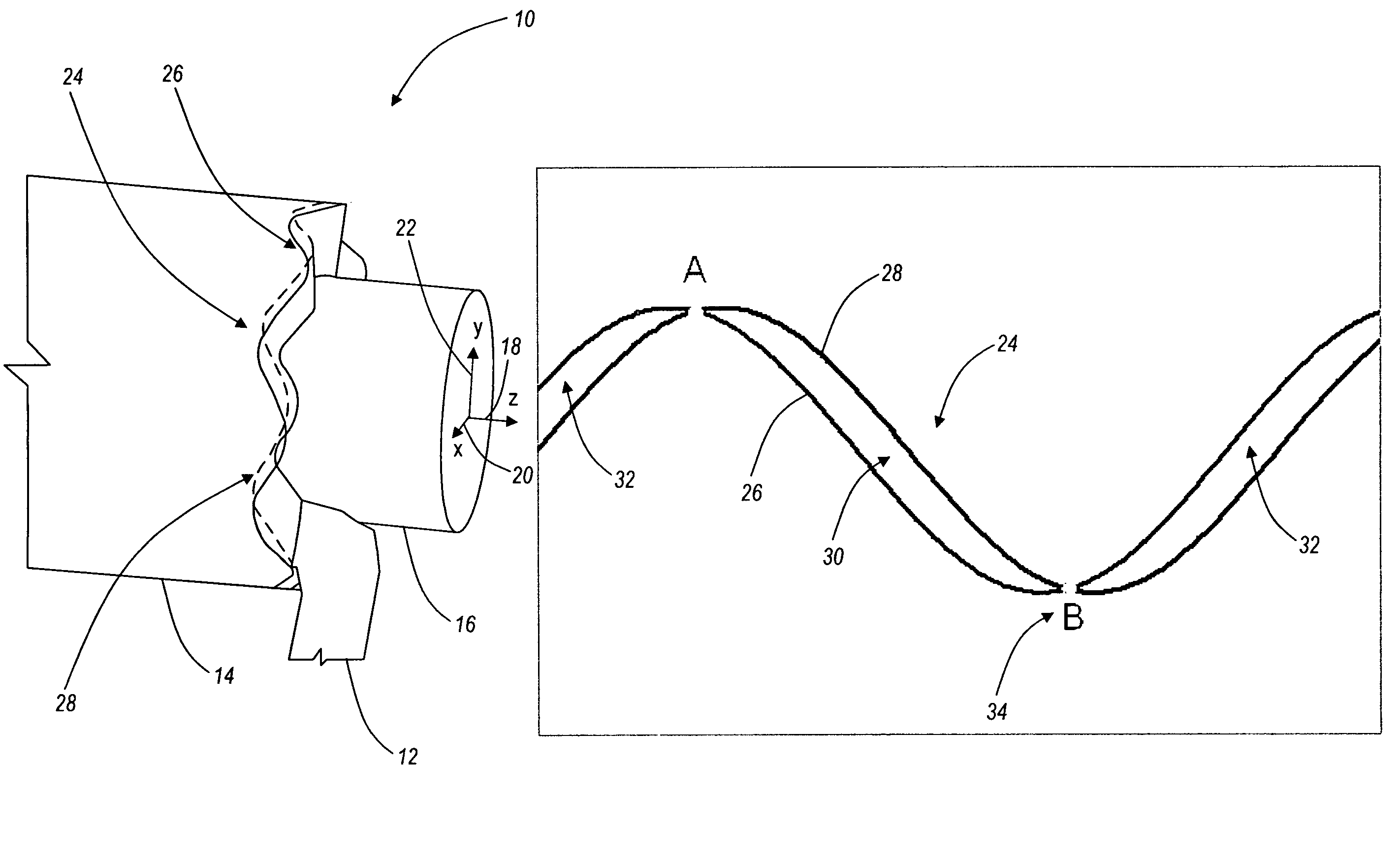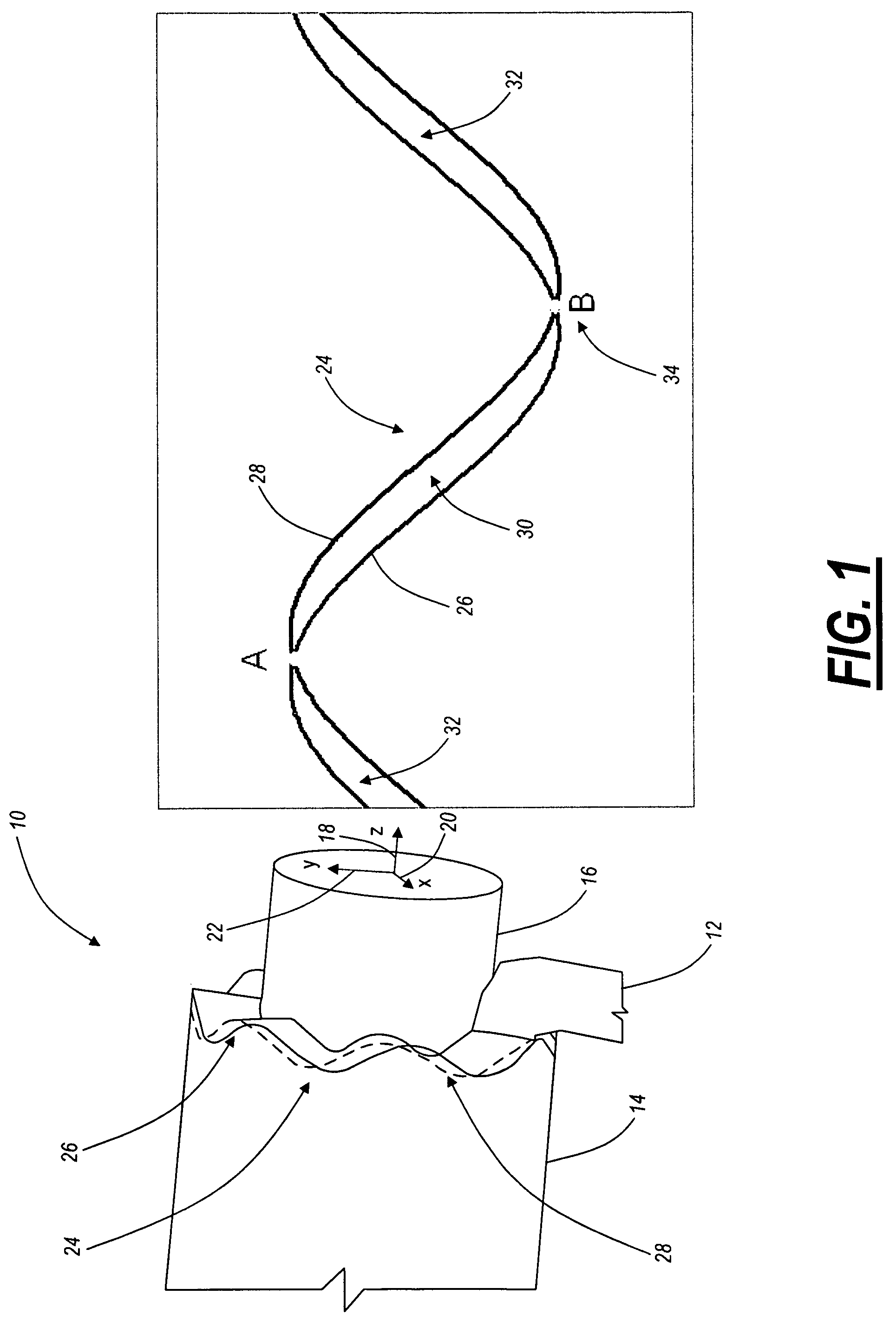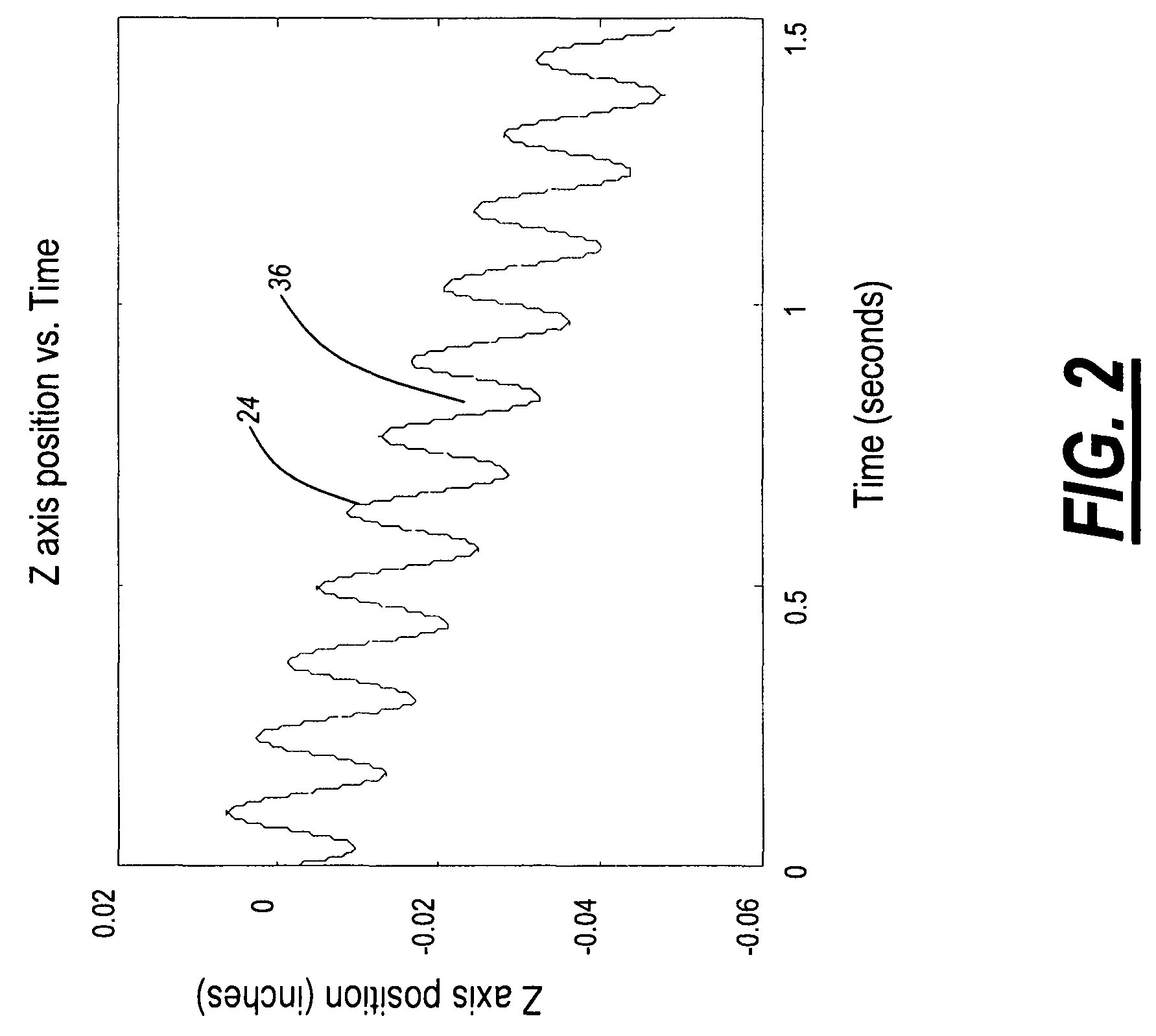Methods and systems for chip breaking in turning applications using CNC toolpaths
a technology of cnc toolpaths and cutting tools, applied in process control, process and machine control, instruments, etc., can solve the problems of unbroken chips, largely unattended machining operations, and strong limitations in efficiencies, so as to improve the surface finish, reduce the temperature of the cutting tool, and enhance the ability to implement automated manufacturing cells.
- Summary
- Abstract
- Description
- Claims
- Application Information
AI Technical Summary
Benefits of technology
Problems solved by technology
Method used
Image
Examples
Embodiment Construction
[0027]The detailed description below summarizes the systems and methods of the present invention in an evolving manner. Initially, simplified cases and solutions are provided to illustrate the basic concepts involved, and more rudimentary techniques. Subsequently, more complicated cases and solutions are provided to illustrate the more advanced concepts involved, and more elegant techniques. It will be readily apparent to those of ordinary skill in the art that different solutions may be preferred in different cases, and various solutions may be combined with one another, as appropriate to the situation. All solutions are exemplary in nature, and should not be construed as limiting in any way.
[0028]Referring to FIG. 1, in one exemplary embodiment, the chip breaking system 10 of the present invention includes a cutting tool 12 that selectively engages a workpiece 14 in order to remove material, resulting in a finished part 16. The workpiece 14 and finished part 16 rotate around an ax...
PUM
| Property | Measurement | Unit |
|---|---|---|
| depth of cut | aaaaa | aaaaa |
| diameter | aaaaa | aaaaa |
| depth of cut | aaaaa | aaaaa |
Abstract
Description
Claims
Application Information
 Login to View More
Login to View More - R&D
- Intellectual Property
- Life Sciences
- Materials
- Tech Scout
- Unparalleled Data Quality
- Higher Quality Content
- 60% Fewer Hallucinations
Browse by: Latest US Patents, China's latest patents, Technical Efficacy Thesaurus, Application Domain, Technology Topic, Popular Technical Reports.
© 2025 PatSnap. All rights reserved.Legal|Privacy policy|Modern Slavery Act Transparency Statement|Sitemap|About US| Contact US: help@patsnap.com



